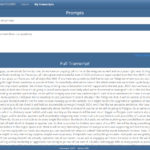
The artificial intelligence landscape is experiencing a seismic shift that most business leaders are completely unprepared for. While ChatGPT and similar chatbots captured global attention in 2023-2024, a new paradigm is quietly emerging that promises to revolutionize how we interact with AI systems forever.
Agentic AI represents the next evolutionary leap beyond simple conversational interfaces, offering autonomous decision-making capabilities that could fundamentally transform business operations, personal productivity, and technological innovation. But what exactly makes this technology so revolutionary, and why should you care?
What is Agentic AI? The Game-Changing Definition You Need to Know

What is agentic AI? This question is becoming increasingly critical as businesses seek competitive advantages in an AI-driven world. Agentic AI meaning extends far beyond the reactive nature of traditional chatbots that simply respond to your questions.
At its core, agentic AI refers to artificial intelligence systems that can act independently, make decisions, and pursue goals without constant human intervention. Unlike conventional AI that responds to prompts, agentic AI proactively identifies problems, develops strategies, and executes solutions.
Think of it this way: if traditional AI is like a highly skilled employee who waits for detailed instructions, agentic AI is like a trusted business partner who understands your objectives and takes initiative to achieve them.
The Five Pillars of Agentic AI
The term “agentic” derives from the concept of agency – the capacity to act independently and make choices that influence outcomes. When applied to artificial intelligence, this translates into systems capable of:
1. Autonomous Goal Pursuit Setting and working toward objectives without human guidance, much like a project manager who can run entire initiatives independently.
2. Dynamic Problem-Solving Adapting strategies based on changing circumstances, similar to how experienced professionals pivot when unexpected challenges arise.
3. Multi-Step Reasoning Breaking down complex tasks into manageable components and executing them in logical sequences.
4. Environmental Interaction Engaging with external systems, databases, APIs, and digital tools to gather information and execute actions.
5. Learning and Adaptation Improving performance through experience and feedback, continuously optimizing approaches for better results.
Research from Stanford’s Human-Centered AI Institute suggests that agentic AI represents a fundamental shift from “tool AI” to “agent AI,” marking the difference between passive assistants and active collaborators.
Agentic AI vs Generative AI: Why This Distinction Matters for Your Business

Understanding agentic AI vs generative AI isn’t just academic – it’s essential for making informed decisions about your technology investments. While these terms are sometimes confused, they represent distinctly different approaches to artificial intelligence.
Generative AI: The Content Creation Powerhouse
Generative AI focuses primarily on content creation and pattern recognition. Systems like ChatGPT, Claude, and DALL-E excel at:
- Content Production: Creating human-like text, images, code, and multimedia
- Responsive Interaction: Answering questions and following detailed instructions
- Creative Tasks: Writing, design, brainstorming, and artistic creation
- Analysis and Summarization: Processing information and providing insights
However, generative AI operates in a fundamentally reactive mode. It waits for human input, processes requests, and delivers outputs – but it doesn’t take independent action or make autonomous decisions.
Agentic AI: The Autonomous Problem Solver
Agentic AI, by contrast, operates in proactive mode. It can:
- Initiate Actions: Starting tasks based on environmental triggers or predetermined goals
- Make Decisions: Choosing between alternatives without human approval
- Execute Workflows: Completing multi-step processes independently
- Adapt Strategies: Modifying approaches based on real-time feedback
- Integrate Systems: Working across multiple platforms and tools seamlessly

A Real-World Example: E-commerce Optimization
Consider how these two approaches would handle e-commerce optimization:
Generative AI Approach:
- Human: “Analyze our sales data and suggest improvements”
- AI: Provides detailed analysis and recommendations
- Human: Manually implements suggestions
Agentic AI Approach:
- AI: Continuously monitors sales performance
- AI: Identifies declining conversion rates automatically
- AI: Tests different product descriptions and pricing
- AI: Implements successful changes and reports results
- Human: Reviews performance summaries and adjusts strategy
The difference is profound: one requires constant human oversight, while the other operates as an autonomous business partner.
The Technology Stack Behind Agentic AI
What makes agentic AI possible? The convergence of several technological advances has created the perfect storm for autonomous AI systems:
1. Large Language Models (LLMs) as Reasoning Engines
Modern LLMs provide the cognitive foundation for agentic systems, enabling:
- Complex reasoning about multi-step problems
- Natural language understanding for interpreting objectives
- Code generation for creating custom solutions
- Strategic planning for achieving long-term goals
2. API Integration and Tool Use
Agentic AI systems can interact with external tools through:
- RESTful APIs for data access and manipulation
- Webhooks for real-time event triggers
- Database connections for persistent storage
- Third-party integrations with business software
3. Memory and State Management
Unlike stateless chatbots, agentic AI maintains:
- Long-term memory of past interactions and decisions
- Context awareness across multiple sessions
- Goal tracking for ongoing objectives
- Performance metrics for continuous improvement
4. Decision-Making Frameworks
Advanced agentic systems incorporate:
- Multi-criteria decision analysis for complex choices
- Risk assessment algorithms for safe operation
- Ethical constraints to ensure appropriate behavior
- Feedback loops for learning and optimization
Why 2025 is the Tipping Point for Agentic AI Adoption

Several converging factors make 2025 the pivotal year for agentic AI adoption:
1. Infrastructure Maturity
Cloud Computing Scale: AWS, Google Cloud, and Azure now offer the computational resources necessary for running complex agentic systems at enterprise scale.
API Ecosystem Growth: The explosion of business APIs means agentic AI can integrate with virtually any software system, from CRM platforms to financial services.
Edge Computing Advancement: Distributed processing capabilities allow agentic AI to operate with minimal latency, crucial for real-time decision-making.
2. Economic Pressure for Automation
Labor Shortage Solutions: Many industries face worker shortages that agentic AI can address by handling routine decision-making tasks.
Competitive Advantage: Early adopters of agentic AI are already seeing significant productivity gains, forcing competitors to follow suit.
Cost Efficiency: The total cost of ownership for agentic AI systems has dropped below the cost of human labor for many business processes.
3. Regulatory Clarity
AI Governance Frameworks: Governments worldwide are establishing clear guidelines for autonomous AI systems, reducing deployment uncertainty.
Industry Standards: Organizations like the Partnership on AI are developing best practices for agentic AI implementation.
Risk Management Protocols: Enterprise-grade safety measures are now available for managing agentic AI systems responsibly.
Industry Applications: Where Agentic AI is Making an Impact Right Now

Smart organizations aren’t waiting for 2025 – they’re implementing agentic AI solutions today. Here’s where we’re seeing the most significant impact:
Financial Services: Autonomous Trading and Risk Management
Algorithmic Trading Agents: These systems continuously monitor market conditions, execute trades, and adjust strategies based on performance data. Unlike traditional algorithms, they can adapt to unprecedented market conditions and make complex risk assessments.
Fraud Detection Systems: Agentic AI monitors transactions in real-time, identifies suspicious patterns, and automatically implements protective measures without human intervention.
Customer Service Automation: Beyond simple chatbots, these systems can handle complex financial inquiries, process applications, and even negotiate terms within predefined parameters.
Healthcare: Predictive Care and Treatment Optimization
Patient Monitoring Systems: Agentic AI continuously analyzes patient data from multiple sources, predicts health issues before they become critical, and automatically adjusts treatment protocols.
Drug Discovery Acceleration: These systems can design and test new drug compounds autonomously, significantly reducing the time and cost of pharmaceutical development.
Administrative Automation: From appointment scheduling to insurance processing, agentic AI handles routine healthcare administration tasks that traditionally required human oversight.
Manufacturing: Smart Factory Operations
Predictive Maintenance: Agentic AI systems monitor equipment performance, predict failures, and automatically schedule maintenance to prevent costly downtime.
Supply Chain Optimization: These systems continuously adjust procurement, inventory, and distribution strategies based on demand forecasts and market conditions.
Quality Control Automation: Advanced vision systems powered by agentic AI can identify defects and automatically adjust manufacturing processes to maintain quality standards.
E-commerce and Retail: Personalized Customer Experiences
Dynamic Pricing Systems: Agentic AI continuously adjusts prices based on demand, competition, inventory levels, and customer behavior patterns.
Inventory Management: These systems predict demand, automatically reorder products, and optimize warehouse operations without human intervention.
Personalized Marketing: Beyond simple recommendations, agentic AI creates and deploys personalized marketing campaigns, adjusting messaging and timing based on individual customer responses.
The Business Case: ROI and Competitive Advantages
[Image Block] Image URL: https://images.unsplash.com/photo-1611224923853-80b023f02d71?w=800&h=500&fit=crop Alt Text: Business dashboard showing ROI metrics and performance improvements from AI implementation Caption: Companies implementing agentic AI are seeing significant returns on investment

The financial case for agentic AI is compelling, with early adopters reporting substantial returns:
Quantifiable Benefits
Operational Efficiency Gains: Companies report 40-60% reduction in time-to-completion for routine business processes.
Cost Reduction: Labor costs for routine decision-making tasks can be reduced by up to 80% through agentic AI implementation.
Revenue Growth: Businesses using agentic AI for customer engagement and optimization see average revenue increases of 15-25%.
Error Reduction: Automated decision-making reduces human error rates by up to 90% in repetitive tasks.
Strategic Advantages
24/7 Operations: Agentic AI never needs breaks, enabling round-the-clock business operations and customer service.
Scalability: These systems can handle increased workload without proportional increases in costs or complexity.
Consistency: Automated decision-making ensures consistent application of business rules and policies.
Data-Driven Insights: Continuous operation generates valuable data about business processes and customer behavior.
According to research from McKinsey Global Institute, companies implementing agentic AI solutions are seeing productivity gains 2-3 times higher than those using traditional automation tools.
Overcoming Implementation Challenges

While the benefits are substantial, implementing agentic AI isn’t without challenges. Here’s how leading organizations are addressing common obstacles:
Technical Integration Challenges
Legacy System Compatibility: Many businesses struggle with integrating agentic AI into existing software infrastructure.
Solution: Implement API-first architectures and use middleware solutions to bridge old and new systems.
Data Quality and Access: Agentic AI requires high-quality, accessible data to make good decisions.
Solution: Invest in data governance and establish clear data pipelines before deploying agentic systems.
Security and Privacy Concerns: Autonomous systems raise questions about data protection and system security.
Solution: Implement zero-trust security models and ensure compliance with regulations like GDPR and CCPA.
Organizational Challenges
Change Management: Employees may resist automation that seems to threaten their roles.
Solution: Focus on augmentation rather than replacement, retraining employees for higher-value activities.
Skill Gaps: Many organizations lack the technical expertise to implement and manage agentic AI systems.
Solution: Partner with specialized AI consultants and invest in employee training programs.
Governance and Oversight: Autonomous systems require new management approaches and oversight mechanisms.
Solution: Establish AI governance committees and implement monitoring dashboards for system performance.
The Future Landscape: What Comes After Agentic AI

As we look beyond 2025, the evolution of agentic AI promises even more transformative changes:
Multi-Agent Systems
Collaborative AI Networks: Multiple agentic AI systems working together to solve complex problems, each specializing in different aspects of the challenge.
Distributed Decision Making: Networks of AI agents that can make collective decisions, similar to how human teams collaborate on projects.
Emergent Intelligence: Systems where the collective capability exceeds the sum of individual AI agents, creating new forms of problem-solving capability.
Industry-Specific AI Agents
Legal AI Practitioners: Agents capable of conducting legal research, drafting documents, and even representing clients in certain types of proceedings.
Medical AI Diagnosticians: Systems that can perform comprehensive medical diagnoses and treatment planning with minimal human oversight.
Creative AI Collaborators: Agents that can conceive, plan, and execute creative projects from concept to completion.
Societal Integration
Smart City Management: Agentic AI systems managing traffic flow, energy distribution, and public services in real-time.
Environmental Stewardship: AI agents monitoring and actively managing environmental systems to optimize sustainability and combat climate change.
Educational Personalization: Individual AI tutors for every student, providing personalized learning experiences adapted to each person’s needs and progress.
Preparing Your Organization for the Agentic AI Revolution
[Image Block] Image URL: https://images.unsplash.com/photo-1552664730-d307ca884978?w=800&h=500&fit=crop Alt Text: Diverse business team planning AI strategy with whiteboards and digital presentations Caption: Organizations need to start preparing now for the agentic AI transformation

The transition to agentic AI isn’t just a technological upgrade – it’s a fundamental business transformation. Here’s your roadmap for preparation:
Phase 1: Foundation Building (Now – 6 months)
Assess Current State: Audit existing systems, data quality, and integration capabilities.
Identify Use Cases: Start with low-risk, high-impact processes where agentic AI can demonstrate clear value.
Build Internal Capability: Begin training technical teams on AI systems and establish partnerships with AI specialists.
Establish Governance: Create policies and oversight mechanisms for AI system deployment and management.
Phase 2: Pilot Implementation (6-12 months)
Deploy Limited Scope Systems: Start with contained environments where agentic AI can prove its value without major business risk.
Measure and Optimize: Establish clear metrics for success and continuously refine system performance.
Scale Gradually: Expand successful pilot projects to broader business processes.
Build Organizational Buy-In: Use early successes to demonstrate value and reduce resistance to change.
Phase 3: Enterprise Integration (12-24 months)
Full System Integration: Implement agentic AI across core business processes.
Advanced Capabilities: Deploy more sophisticated systems that can handle complex decision-making scenarios.
Ecosystem Development: Create networks of AI agents that can collaborate on complex business challenges.
Competitive Differentiation: Use agentic AI capabilities to create unique value propositions in your market.
Key Considerations for Business Leaders

As you consider implementing agentic AI in your organization, keep these critical factors in mind:
Ethical Considerations
Decision Transparency: Ensure that AI decision-making processes can be explained and audited when necessary.
Bias Prevention: Implement systems to detect and prevent algorithmic bias in automated decisions.
Human Oversight: Maintain appropriate levels of human control and intervention capability.
Privacy Protection: Ensure that agentic AI systems comply with data protection regulations and ethical standards.
Risk Management
System Reliability: Implement robust testing and validation processes to ensure agentic AI systems perform as expected.
Failure Recovery: Develop contingency plans for when autonomous systems fail or make incorrect decisions.
Security Measures: Protect agentic AI systems from malicious interference and cyber attacks.
Regulatory Compliance: Stay current with evolving regulations around autonomous AI systems.
Success Metrics
Business Impact Measurement: Establish clear KPIs for measuring the success of agentic AI implementations.
ROI Tracking: Monitor both direct cost savings and indirect benefits like improved customer satisfaction.
Performance Optimization: Continuously monitor and improve agentic AI system performance.
Competitive Analysis: Track how agentic AI adoption affects your competitive position in the market.
Conclusion: The Inevitable Shift to Autonomous AI
[Image Block] Image URL: https://images.unsplash.com/photo-1485827404703-89b55fcc595e?w=800&h=500&fit=crop Alt Text: Sunrise over a modern cityscape symbolizing the dawn of the agentic AI era Caption: The age of agentic AI is dawning, bringing unprecedented opportunities for those ready to embrace change
The shift from reactive chatbots to proactive agentic AI isn’t just a technological evolution – it’s a business revolution that will separate market leaders from the competition. Agentic AI meaning extends far beyond simple automation; it represents a fundamental change in how businesses operate, make decisions, and create value.

As we’ve explored throughout this article, what is agentic AI becomes clear when you see its autonomous capabilities in action. Unlike the agentic AI vs generative AI debate, which often focuses on technical differences, the real distinction lies in business impact: one responds to requests, the other drives results.
The Strategic Imperative
Organizations that embrace agentic AI in 2025 will gain:
- Operational advantages through 24/7 autonomous operations
- Competitive differentiation via superior customer experiences
- Cost efficiencies from automated decision-making processes
- Innovation capabilities through AI-human collaboration
- Market leadership by delivering impossible-to-replicate value
The Time to Act is Now
While agentic AI might seem futuristic, the technology exists today, and early adopters are already gaining significant advantages. The question isn’t whether agentic AI will transform business operations – it’s whether your organization will be ready when it does.
The companies that start building agentic AI capabilities now will be the ones that define their industries’ future. Those that wait will find themselves competing against autonomous systems that never sleep, never make emotional decisions, and continuously optimize for better performance.
The age of agentic AI is here. The only question is: will you lead the transformation or be transformed by it?




